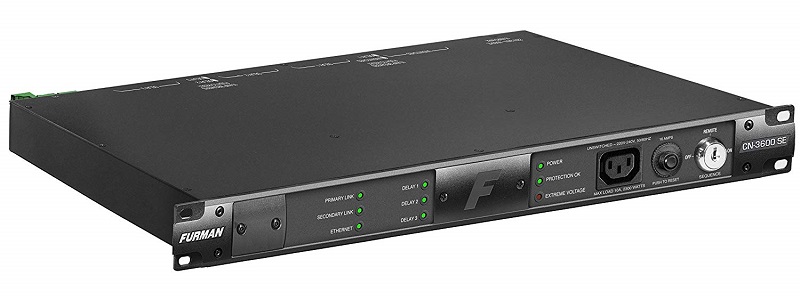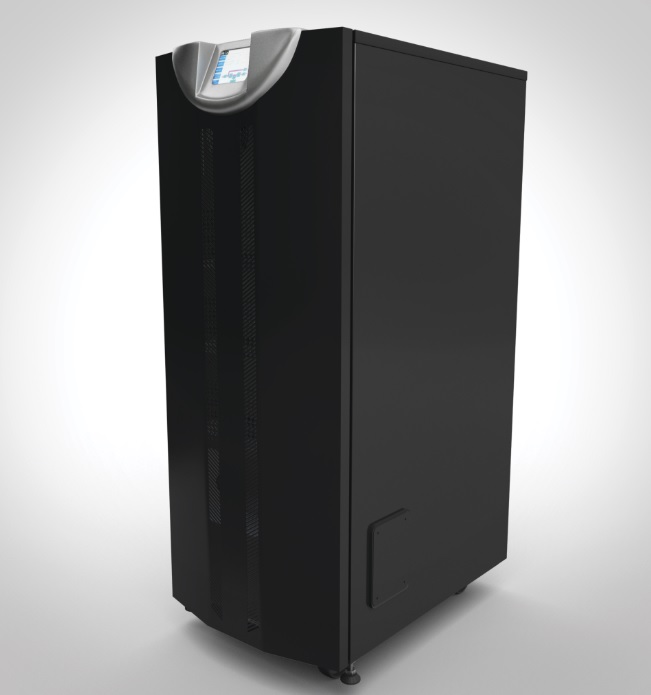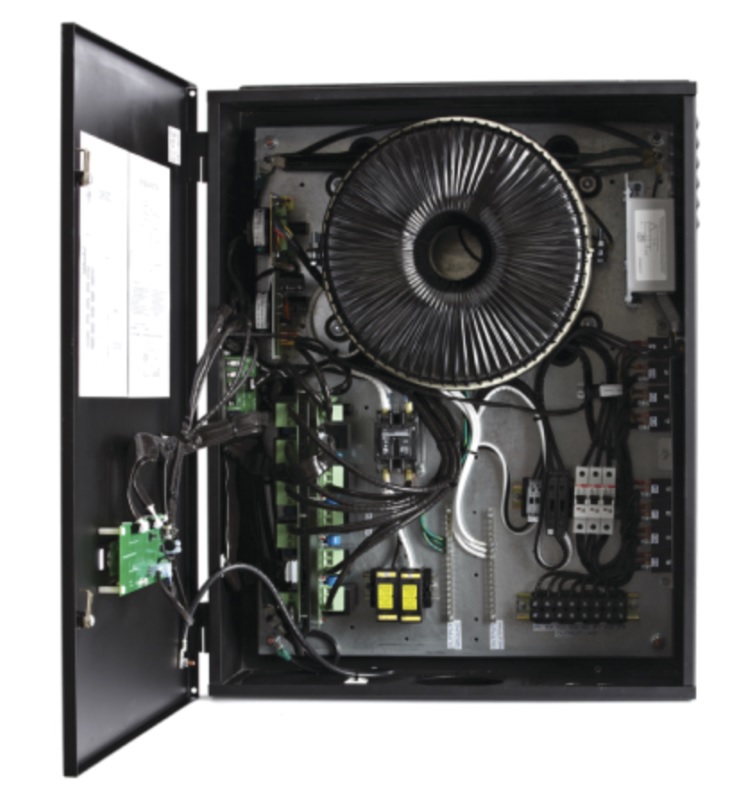Power protection is something most AV integration customers don’t think about until it’s too late, but surge protection products, along with power conditioning products, are the unsung heroes of the electronics industry.
Well-designed surge-protection and power conditioning products are capable of defending against harmful power spikes and surges for everything from networking components to amplifiers to video displays to security systems.
Power conditioning add benefits such as radio frequency (RF) and electromagnetic interference (EMI) filtering and even voltage regulation to help connected products maximize their respective designed performance parameters and life expectancies.
The problem with the surge protection product market is the plethora of marketing terms that make any sort of product research nearly impossible to execute without some sort of engineering background.
Helping to navigate these terms, CI asked a panel of power conditioning industry experts to decipher the jargon that proliferates their profession.
Metal Oxide Varistors (MOVs)
Realistically it’s impossible to fully grasp the technologies used within the power protection product market in one article.
It is possible,however, to build a basic understanding of some of the legitimate technologies the market employs to help sort through the myriad of so-called “magical” solutions that populate the market.
The most fundamental protection technologies used to safeguard electronic equipment are metal oxide varistors (MOVs) and avalanche diode circuits.
Christos Desalernos, power product manager, Nortek Security & Control (NSC), says MOV designs are the most prevalent technologies upon which protection circuits in the power protection industry are based for a number of reasons.
“The most commonly used surge suppressors are MOV technology. They are cost effective and work quite well,” notes Desalernos. “If only MOVs are used in the circuit they will sacrifice themselves to protect equipment.”
Meanwhile, avalanche diodes are typically not used by themselves in an AC surge suppressor due to their limited energy capability, according to Desalernos.
Avalanche diodes are typically used in series mode surge suppression circuits like the Furman SMP [Series Multi-Stage Protection] as part of a DC rectifier circuit. With SMP, Furman employs inductors—in series—capacitors, MOVs and avalanche diodes.
“Since we are using multiple technologies, not only to protect connected equipment but also in the surge suppressor,they are considered non-sacrificial,” adds Desalernos.
He says integrators should have no concerns using MOV circuits, but he warns against using inexpensive power strips because those products tend to offer higher clamping voltages.
“You really want a clamping voltage of 1,000 volts or less. Most of the Panamax and Furman products range from 188 Vpk to 500 Vpk,depending on the model and price point,” Desalernos says.
“Sacrificial designs allow for smaller form factors and most cost-effective solutions.”
Lauren Simmen, manager, marketing, SurgeX, says integrators should determine the application and then ask if the job needs surge suppression or surge elimination.
Simmen says MOVs allow energy to pass through to connected components, which can affect the life expectancy of those products plugged into the protection solutions.
MOVs are specifically designed to reduce the force of power surges. Simmen says SurgeX’s products utilize a design called Advanced Series Mode, which is capable of eliminating up to 6,000 volts, while power conditioning against spikes, sags and electrical noise.
Simmen recommends integrators ask these four questions when specifying surge suppression systems:
- What is the incoming voltage?
- What are the load requirements, or what is the amp draw of the products that need protection?
- What features and functionality do you (or the customer) want?
- Does the customer want control capabilities and the ability to sequence?
Power sequencing is a feature that turns on lower power devices such as media players and processing products before items that require higher levels such as power like amplifiers.
Likewise, sequencing also works in reverse order to power down systems to avoid pops coming through speaker systems, which can damage speakers.
Isolation Transformers, UPS & Other Power Protection Options
Another category of products in the world of power protection is isolation technologies.
Toronto-based Torus Power is a manufacturer of isolation transformer-based power solutions, and according to Kevin Main, president and chief operating officer, Torus Power, isolation provides a unique set of benefits to the category.
“Power isolation is very different than power conditioning and there are some real, measurable differences. Power isolation is the process of delivering voltage through a transformer core using primary and secondary copper windings that are shielded or ‘isolated’ from each other,” explains Main.
“The benefits of using this technology are the improvements in overall noise reduction on the incoming voltage line, providing a more stable power platform that allows the audio/video equipment to run at lower temperatures; improved performance for dynamic equipment like power amplifiers and a more defined and accurate sound stage for the overall system.”
To help integrators ensure they are properly specifying the proper isolation solution, Torus Power offers a service that will examine any system in question to recommend a solution.
Some of the factors the company looks at include equipment location, wiring plans, and the power availability from the main electrical panel to the equipment location. Other items Torus Power looks at include the local power grid to see if there are any power fluctuations that could cause problems.
A popular solution that’s been used in the IT and A/V industries for years is called UPS or uninterruptible power supplies.
Simmen points out that UPS products can play an important part in protecting a system when specified correctly, but there are many misconceptions related to these products.
“Even if you’re using an online UPS, where the incoming power is constantly being transferred from AC to DC and back to AC to create what is known as a pure sine wave, the connected devices and system are still susceptible to surges if a UPS is all you are using,” she emphasizes.
A UPS solution does benefit a system by ensuring connected components receive a pure 120-volt sine wave to eliminate voltage sags and surges.
She says these products also provide power during outages to allow users the ability to properly power down their computers and other devices to avoid damaging these products due to the abrupt termination of electrical current.
Like other product categories that use web-based connectivity to augment the functionality of their products, the power protection industry also offers remote monitoring capabilities.
Desalernos says remote management is an option that integrators can use to manage power installations from anywhere in the world.
These technologies, which include his company’s BlueBOLT platform,allow authorized individuals to monitor specific connected devices and to remotely control on/off power cycles, which is a popular function within these remote monitoring systems.
Third-Party Validation Separates Power Protection from Power Hype
Sifting through all of the jargon that’s thrown around the power protection category can be an exercise in futility. Every company seems to use proprietary terms to describe how their respective products make connected electronics perform better to meet their longevity and performance goals.
In reality, many of the technologies describing by these marketing terms are unproven and in fact could cause more harm than good. [related]
A proven method to weed out marketing hype from reality is to check to see of the company’s products are certified by third-party testing firms to validate their safety and performance claims.
In a blog posted on the Furman Power website, Jerry Hoopes, director of hardware engineering, NSC, points out that OSHA-certified testing laboratories that are known as nationally recognized testing laboratories (NRTL) certify products based on tests they perform.
Once a product passes these tests,he continues, these products are authorized to bear the mark of the laboratory that performed the testing to show consumers the product has met independent testing for safety.
In North America, popular labs include Underwriters Laboratories (UL) in the U.S. and the Canadian Standards Association (CSA) in Canada.
He also notes that other labs, including CSA, TUV and ETL, all provide testing that equates to the same levels as UL’s standards.
In the case of Torus Power, Main says it is important for his company to submit its products to these third-party labs to underscore its commitment to designing safe and reliable products.
“The National Electrical Code also requires that all manufacturers of electrical products get their products approved for electrical safety. For large volume products, a certification company like CSA or UL ensures that the products meet the specified safety standards.
“For specialized products that are hand-built in smaller quantities like Torus Power, this is done by a field evaluation team that inspects every Torus Power unit coming off the assembly line to ensure that each unit meets the CSA SPE-1000 standard,” emphasizes Main.
Hoopes says power management products are tested under the UL 1363 standard of “Re-locatable Power Taps,” which he says applies to products that extend power to multiple outlets as an extension of a branch circuit.
He also says UL tests products that function to suppress surge energy to AC loads under the standard 1449 Transient Voltage Surge Suppressors specification.
Hoopes notes that some of the other UL standards to which power products are tested to meet include:
- UL 498: Attachment Plugs and Receptacles
- UL1283 Electromagnetic Interference (EMI) Filters
- CSA C22.2 No. 21: Cord Sets and Power Supply Cords
- CSA C22.2 No. 0.4: Grounding and Bonding
- CSA C22.2 No. 8: Electromagnetic Interference (EMI) Filters
The safety standards and the increasing level of functionality that manufacturers are building into their products make it easier for integrators to determine what products make sense for particular applications as the power protection industry evolves, adds Desalernos.
Glossary of Power Terms
Providing some context to some of the more commonly used terms in the power protection industry is a glossary of terms supplied by SurgeX:
AC: Alternating Current
The voltage varies constantly above and below zero in a 50 or 60 Hertz sinewave. Used for power distribution because the voltage can easily changes due to a transformer.
Ampere (or Amp)
The unit of electric current. An analogy would be the amount of water going over a waterfall.
Avalanche Diode
A type of semiconductor component that is normally an open circuit until the voltage increases to the point where the device turns on and conducts current. They are similar in operation to MOVs, but do not degrade with use.
Avalanche diode circuits are reliable as long as they are used strictly within their ratings.
Brown out
A sustained under-voltage condition,which is low enough to cause equipment malfunction. Most equipment can operate from 105 volts to 135 volts without serious performance degradation. A voltage lower than 90 volts will usually cause functional problems.
Capacitance
The effect where electric charge is stored. A capacitor is an electronic component made specifically to store electric charge. Capacitors are also used to differentiate between frequencies in applications such as crossover networks.
A capacitor has high impedance at low frequencies (open circuit at DC) and its impedance decreases as frequency increases.
DC: Direct Current
The voltage is constant and does not vary. Used primarily inside electronic equipment.
EMI: Electromagnetic Interference
EMI is a general type of electric, radio or magnetic interference,which is transmitted by conduction or radiation and can be of a very wide frequency range.
Hertz
The unit of frequency in cycles per second. Used to characterize anything from AC power (50 or 60 Hertz) up to cellular phone radio frequencies (Giga-Hertz)
Inductance
The effect where energy is stored in a magnetic field. An inductor is an electronic component made specifically to store energy by using a magnetic field. Inductors are also used to differentiate between frequencies in applications such as crossover networks.
An inductor has low impedance at low frequencies (short circuit at DC) and its impedance increases as frequency increases.
Inrush
The initial current that occurs when motors or electronic equipment is first turned on. The inrush current is usually several times higher than the normal operating current. In the case of electronic equipment the initial inrush current occurs while the power supply charges up.
Equipment with a large current draw can have an inrush current large enough to blow a circuit breaker or damage switches and relays.
Joule
The unit of energy (measured over time). One Joule is equivalent to the heat generated during one second when one Volt is driving one Amp around a circuit.
MOV: Metal Oxide Varistor
A disc shaped device,which is normally open circuit until the voltage increases to the point where the MOV turns on and conducts current. Originally developed to suppress arcing on relay contacts but used extensively in shunt-mode surge protectors. Have a limited lifetime.
Parallel
Devices connected together so that the same voltage appears across all devices.
Power Surge or Voltage Surge
A short-term over-voltage condition. Surges caused by lightning are very high power,but extremely short in duration, lasting only for 20 to 50 millionths of a second.
Surges caused by equipment switching and other sources are also extremely short lasting typically for less than a thousandth of a second.
RF interference
Radio Frequency Interference. Interference which is caused by radio signals.
Series
Devices connected together in a chain so that the same electric current passes through all devices.
Series Mode
A SurgeX brand of surge protector, which uses a high-voltage device to prevent surges and transients from being passed to connected equipment.
Shunt Mode
A type of surge protector that uses MOVs, avalanche diodes or gas discharge tubes to conduct surge current to the neutral or ground wire.
Switch-mode power supply
The power supply inside electronic equipment converts the 120 volts AC to the DC required by the circuitry.
A switch mode supply is smaller and lighter than a traditional power supply because it switches the current on and off very fast to generate the DC using a small high-frequency transformer rather than a larger traditional power transformer.
Toroidal Transformer
A transformer that is constructed around a ring of iron. This produces a more efficient, compact design with a tighter magnetic field.
Transient or Spike
Similar to a voltage surge in that they cause a very brief over-voltage condition, but are typically less energetic and less damaging.
Volt
The unit of electric potential. Voltage drives electric charge around a circuit. An analogy would be the height of a waterfall.
Voltage Regulation
A means of maintaining the equipment voltage at a constant level. Domestic AC power is distributed at a nominal 120V but this can vary depending on the load and other factors in the distribution. A voltage regulator adjusts for those variations to provide a constant 120V at the equipment.
Watt
The unit of power (continuously generated): 1 watt is generated when 1 volt is driving 1 amp around a circuit.













